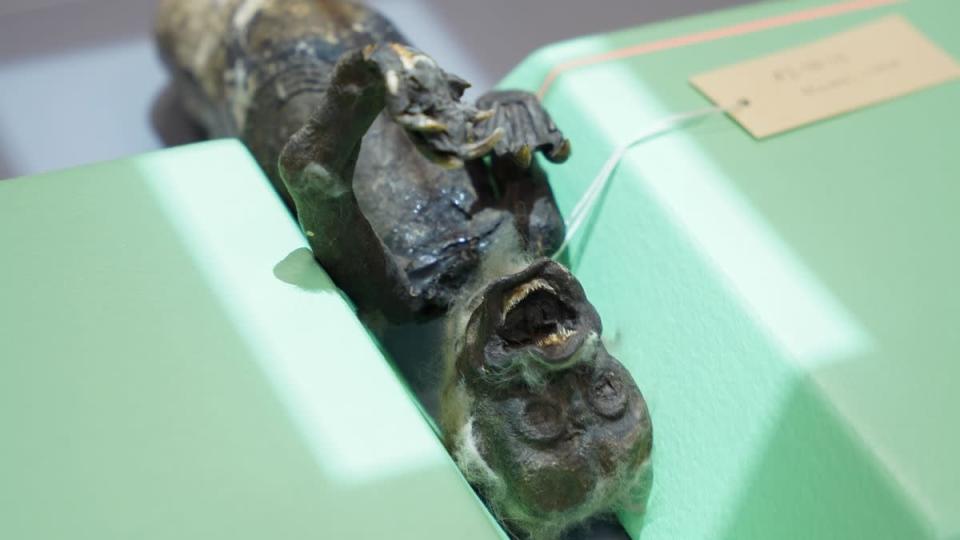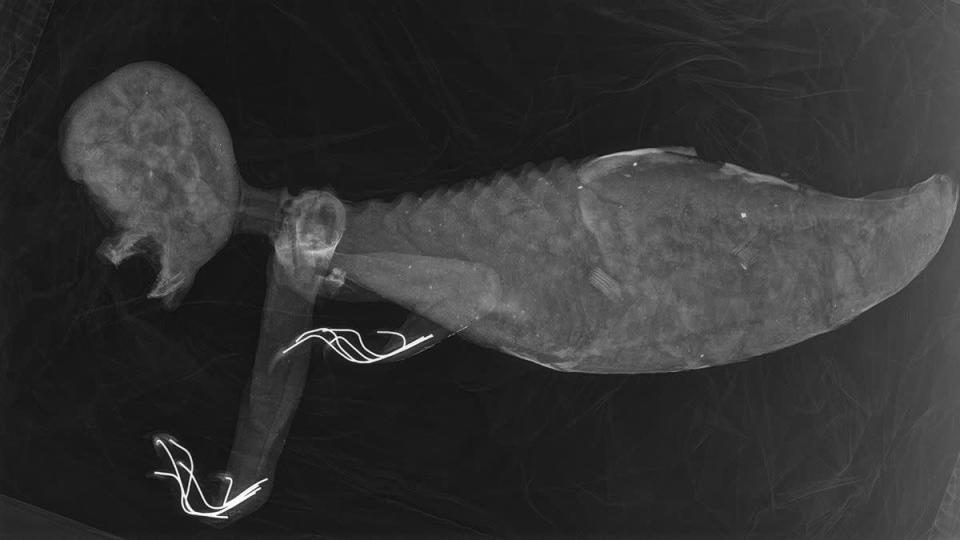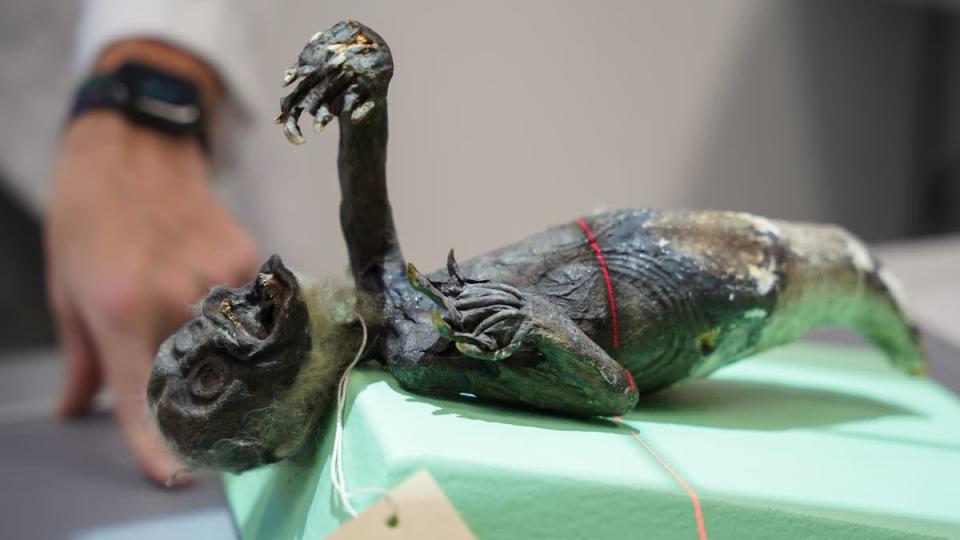Researchers Determine Grotesque ‘Mermaid Mummy’ Is a Hybrid of Lizard, Monkey, and Fish
One of nature’s most enduring mysteries, the “Fiji mermaid,” has baffled and disgusted those who’ve encountered it for over a century Now, scientists may be close to solving some of its greatest riddles, namely what species it is.
The Fiji mermaid takes its name from an object of the same name which showman P.T. Barnum bought from a Japanese fisherman in the 1840s. The popularity of this item on the sideshow circuit spurred many to create their own mermaids; some were made of papier-mâché, while others (such as the one in question) were stitched together using various animal carcasses.

Fiji Mermaid Project/Joseph Cress
This particular Fiji mermaid was bought by an American Navy sailor in Japan in the 1870s. He later donated it to a local heritage center in Springfield, Ohio. Since 2003, the mermaid has been on display at the local Clark County Historical Society, but was recently removed so that scientists could study it.
Leading the research is Joseph Kress, a radiologist at Northern Kentucky University. His team used X-rays and CT scans to determine the creature's origins. "This allowed us to see [the mummy] in almost every dimension in the hopes to see what was inside it," Cress told Live Science.
Through the scans, Kress and his team determined that the Fiji mermaid is the head and torso of a monkey grafted onto the body of a fish. Its clawed, gnarled fists are the legs of a lizard, which the team thinks is likely a Komodo dragon. They also found a set of wooden stakes running head to tail through the remains, and another inserted across the shoulder blades, likely to keep the mutant creation from deteriorating.

Fiji Mermaid Project/Joseph Cress
Once the researchers complete more detailed models of the mermaid's parts, they will submit them to various aquariums and zoos to see if officials there can help identify the sub-species of each animal.
Last year, scientists investigated another Fiji mermaid found hidden in a Japanese temple. However, upon further inspection, it was found to be made from cloth, paper, and cotton, rather than anything living. Both creations resemble the mythical ningyo, which in Japanese mythology are fish-like creatures with human heads, and symbols of longevity.

Fiji Mermaid Project/Joseph Cress

